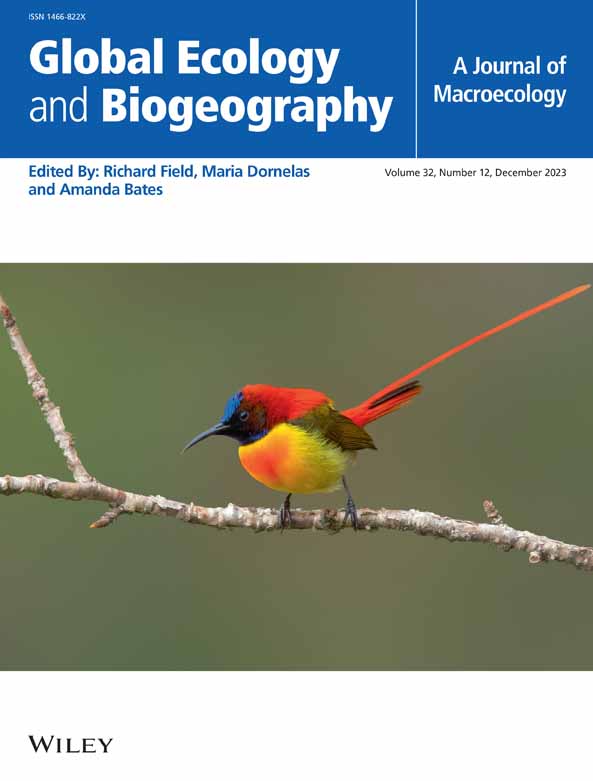‘Slow-Fast’ Plant Trait Spectra Are Associated With Ecological Niches Across Global Climatic Gradients
Abstract
Aim
Global climate change is compressing species' realised niches and further threatening their distributions. Species traits, especially the trait spectra synthesised from traits, are one way in which species can match changes in their environment. Hence, integrating trait spectra and niches will help us understand how species adapt to their environment under global change.
Location
Global.
Time Period
Present.
Major Taxa Studied
Angiosperms.
Method
We collected root traits from 158 angiosperm species and leaf traits from 512 angiosperm species from a global trait database to construct the leaf and root trait ‘slow-fast’ spectrum based on resource acquisition strategy, as well as the collaboration spectrum related to root mycorrhizal colonisation. After rebuilding their phylogenetic relationships and defining species' environmental niches based on 213,979 occurrences of these species, we examined the relationship between these trait spectra and environmental niches along global climatic patterns.
Result
Plants with ‘slow’ leaf traits were generally associated with narrow niche breadths and marginal niche positions, especially in high precipitation areas. The relationship between the ‘slow-fast’ spectrum in root traits and ‘marginal-central’ niche position reversed with decreasing precipitation. However, the relationships between leaf traits and niche variables were significant for woody species but not for herbaceous species.
Main Conclusion
Our research expands the plant trait spectra in macroecology applications. The root and leaf ‘slow-fast’ trait spectra of angiosperms are driven by both macroclimate and long-term evolutionary pressure. Understanding how these traits relate to the niche of species helps to predict how that species is likely to adapt to environmental change, which can enhance the predictive ability of niche theory for plant environmental adaptability.


 求助内容:
求助内容: 应助结果提醒方式:
应助结果提醒方式:


